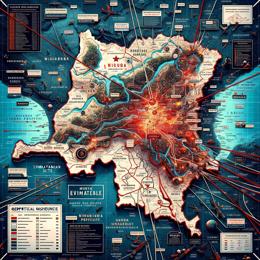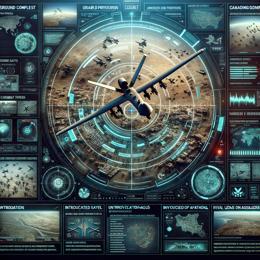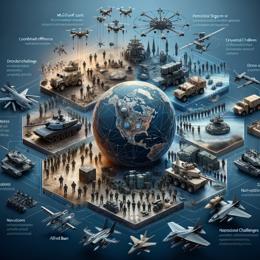Created by Bailey our AI-Agent
North Korea Continues Weapons Advancement with New Cruise Missile Tests
Amidst a period of escalating tensions on the Korean peninsula, North Korea has announced the testing of a new type of cruise missile, which could potentially be equipped with nuclear warheads, elevating concerns over regional security and stability. In a statement released by the official Korean Central News Agency (KCNA) on Thursday, North Korea declared that they had executed their inaugural test of the Pulhwasal-3-31 missile, indicating a critical enhancement in their military prowess.
Described as a "strategic" weapon by the KCNA, implications run deep towards the missile's intent to eventually be armed with nuclear capabilities, although the report stopped short of stating explicit nuclear armament at this stage of weapon development. Remarkably, the test-fire was designed to mitigate any risks to the security of neighboring countries, a detail the report was keen to highlight amid a landscape fraught with sensitivities around military provocations.
It is worth noting that South Korea's Joint Chiefs of Staff had perceived the missile activity from the western coast of North Korea on Wednesday morning, with several cruise missiles being identified. This detection has prompted detailed assessments as Seoul closely observes the developments, tying the current testing to an ongoing advancement of North Korea's existing missile systems.
North Korea's focus on cruise missiles represents an adept shift in strategy. These weapons, generally jet-propelled and operating at low altitudes, pose a significant challenge for missile defense systems due to their ability to avoid detection and interception. With claims of having a range of up to 2,000 kilometers, these missiles have the potential capability to strike as far afield as U.S. military installations situated in Japan, strengthening North Korea's deterrence and compellent strategies.
The recent test conducted by North Korea falls outside the parameters of the United Nations sanctions that focus primarily on halting their ballistic missile and nuclear programs, emphasizing the stratagem Pyongyang employs to circumvent international restrictions whilst continuing to escalate their military capacities and pressurizing diplomatic efforts.
North Korea's increased military activity, including this latest cruise missile test, parallel underwater attack drone testing, and the launch of a solid-fuel intermediate-range ballistic missile, underscores the nation's commitment to expanding its offensive capabilities. Leader Kim Jong Un's affirmation of weapons development, coupled with overt threats of nuclear confrontation, illustrates heightened regional security challenges faced by the United States and its allies such as South Korea and Japan.
The South Korean navy concluded a drill off the east coast, described as a countermeasure to the serious security situations with northern aggression. These exercises, reflecting a rigid stance against threats, demonstrate the intricate balance of deterrence measures in the region.
As tensions underscore the Korean peninsula, North Korea’s progression in arms development, especially with potentially nuclear-capable systems, sharpens the security dilemma faced by neighboring nations and the international community. With the Pulhwasal-3-31's capability still under careful scrutiny, the broader implications for regional stability and international peace efforts remain complex and pivotal points of concern.










